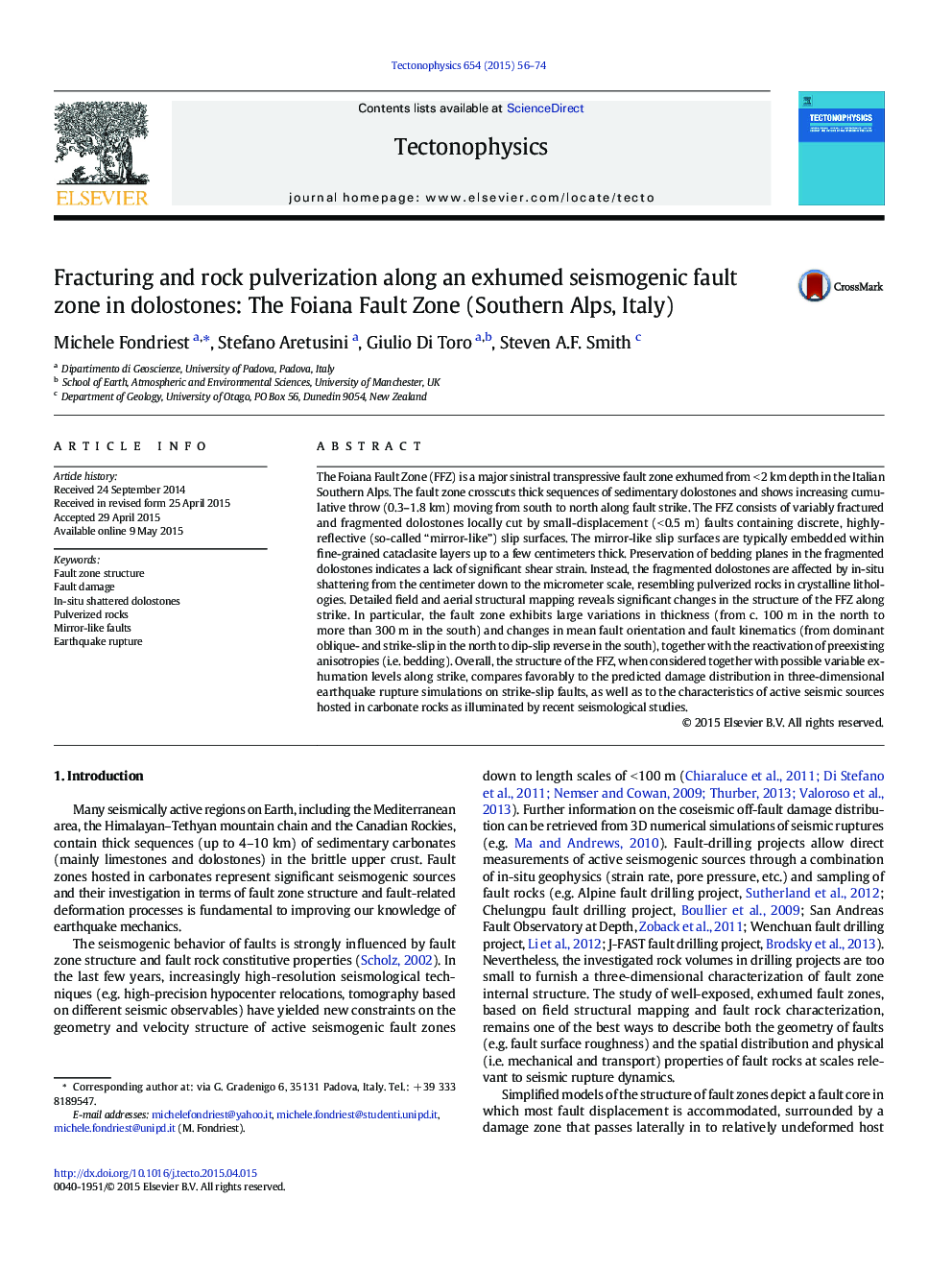| کد مقاله | کد نشریه | سال انتشار | مقاله انگلیسی | نسخه تمام متن |
|---|---|---|---|---|
| 6433651 | 1636741 | 2015 | 19 صفحه PDF | دانلود رایگان |
- The Foiana Fault Zone consists of in-situ shattered dolostones cut by mirror-like faults.
- In-situ shattered dolostones are similar to pulverized rocks described in crystalline lithologies.
- In-situ shattered dolostones and mirror-like faults record ancient earthquake ruptures.
- The Foiana Fault Zone is an analog of active seismogenic sources in carbonate rocks.
The Foiana Fault Zone (FFZ) is a major sinistral transpressive fault zone exhumed from <Â 2Â km depth in the Italian Southern Alps. The fault zone crosscuts thick sequences of sedimentary dolostones and shows increasing cumulative throw (0.3-1.8Â km) moving from south to north along fault strike. The FFZ consists of variably fractured and fragmented dolostones locally cut by small-displacement (<Â 0.5Â m) faults containing discrete, highly-reflective (so-called “mirror-like”) slip surfaces. The mirror-like slip surfaces are typically embedded within fine-grained cataclasite layers up to a few centimeters thick. Preservation of bedding planes in the fragmented dolostones indicates a lack of significant shear strain. Instead, the fragmented dolostones are affected by in-situ shattering from the centimeter down to the micrometer scale, resembling pulverized rocks in crystalline lithologies. Detailed field and aerial structural mapping reveals significant changes in the structure of the FFZ along strike. In particular, the fault zone exhibits large variations in thickness (from c. 100Â m in the north to more than 300Â m in the south) and changes in mean fault orientation and fault kinematics (from dominant oblique- and strike-slip in the north to dip-slip reverse in the south), together with the reactivation of preexisting anisotropies (i.e. bedding). Overall, the structure of the FFZ, when considered together with possible variable exhumation levels along strike, compares favorably to the predicted damage distribution in three-dimensional earthquake rupture simulations on strike-slip faults, as well as to the characteristics of active seismic sources hosted in carbonate rocks as illuminated by recent seismological studies.
Journal: Tectonophysics - Volume 654, 18 July 2015, Pages 56-74
